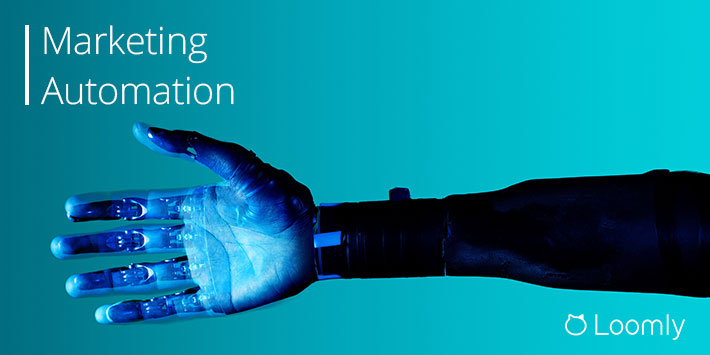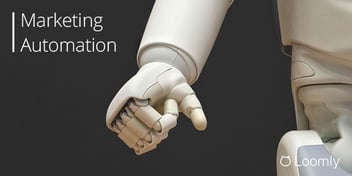Marketing Automation: The Definitive Guide [2021]
The global marketing automation market size is expected to reach 25.1 billion USD by the end of 2023. Given the growth in digital marketing, it’s no surprise that technologies designed to automate repetitive tasks, such as email marketing, and tools that facilitate the use and analysis of large amounts of data are so popular.
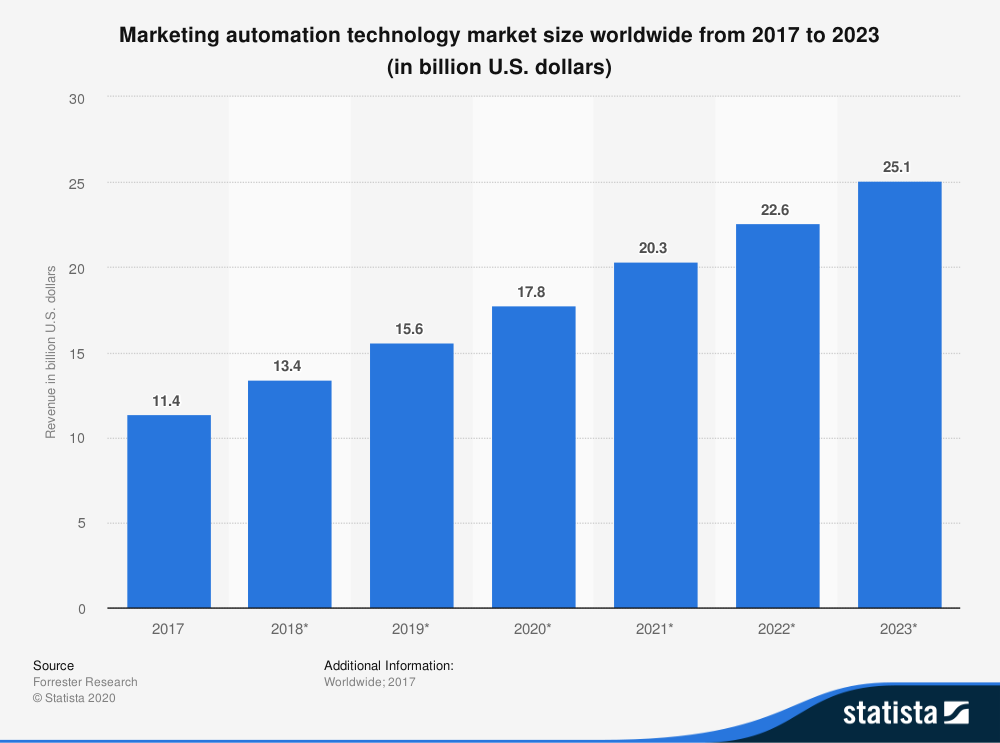
But there’s more to marketing automation than introducing operational efficiencies to save time and money. It’s also a way of providing a better customer experience.
In this guide, we’ll explore what marketing automation is and how it can benefit your brand. Then, we’ll examine some successful automated marketing workflows before looking at how to implement a winning marketing automation strategy for your brand.
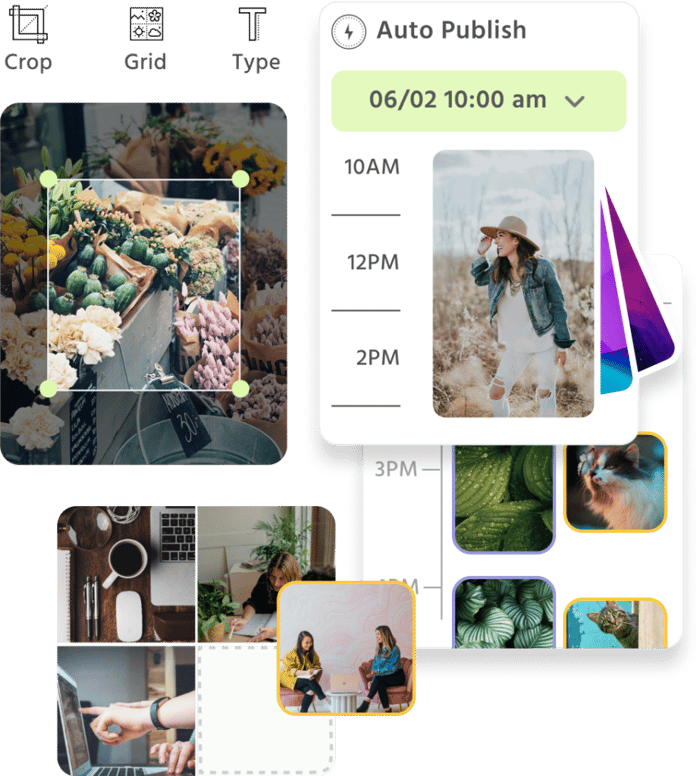
Manage all your social media accounts in one place.
Craft, schedule, & auto-post content to all your social channels, then track analytics and manage interactions from a single, easy-to-use dashboard.
What is Marketing Automation?
Marketing automation is the use of software to automatically complete marketing tasks – not only to increase the efficiency of the marketing team but also to provide a more personalized experience to their customers.
Marketing automation allows specific repetitive tasks to be completed without a member of the marketing team to be present. These tasks might include:
- Content curation
- Data gathering
- Email marketing
- Social media scheduling
- Social listening
- Analytics/measuring
For example:
Chubbies has a pre-written cart abandonment email that is automatically sent to any customer who leaves their website with an item in their cart.
It allows Chubbies to connect with the customer, and capture lost revenue, without needing to commit a member of the marketing team to a 1-on-1 discussion with the customer.
Marketing automation tools automate some processes, like posting for social media, sending triggered emails, and segmenting customers based on their actions. But they can still be customized to your requirements and personalized for your customers, for example, with their name or recent product views.
Marketing automation allows you to rapidly scale your efforts across multiple channels and deliver a consistent experience regardless of customers’ differing interests or needs.
Marketing Automation Tools
The top three marketing automation solutions chosen by U.S. industry professionals are Oracle, Adobe, and Hubspot, accounting for slightly more than 48% of the market:
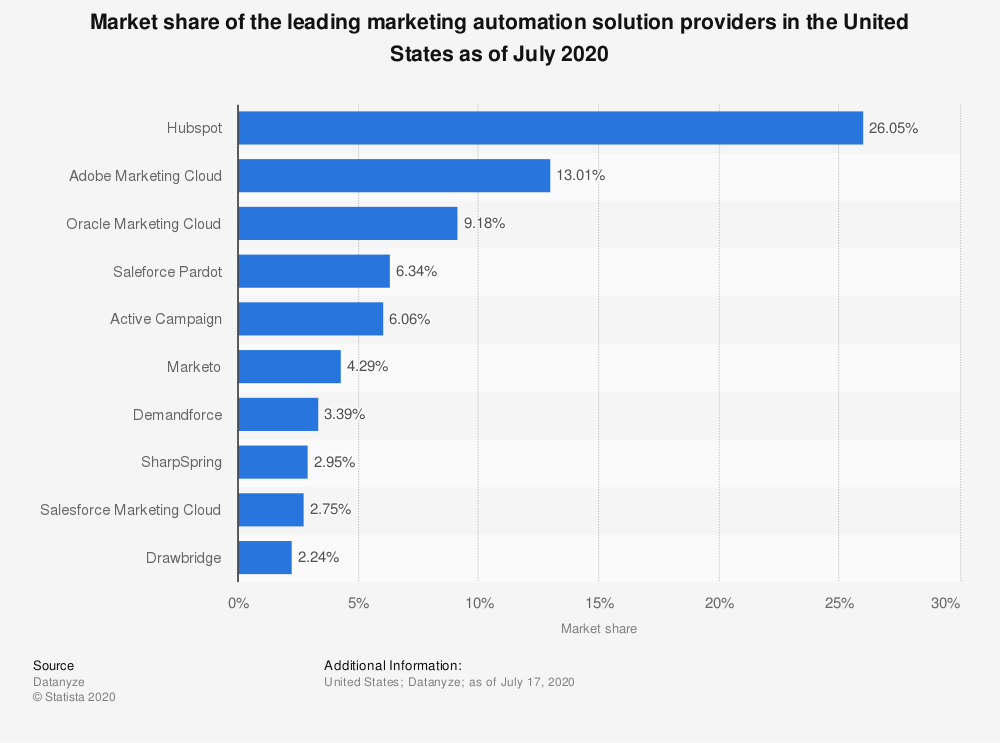
How Marketing Automation Can Benefit Your Brand
Here are ten key benefits of marketing automation:
Identify more leads
Marketing automation systems understand buyer signals, score them appropriately, and surface more (and higher quality) leads.
Convert more leads by nurturing them 24/7
Marketing automation systems can build relationships 24/7 by providing help and advice to your potential customers, identifying what content they engage with, and reacting accordingly.
Create a better end-to-end customer experience
Marketing automation systems guide every customer to the right content at the right time after every purchase resulting in happier customers.
Increase customer lifetime value
Marketing automation systems can be programmed to handle minor sales automatically, educate customers about the next upgrade (once they are happy with the first), cross-sell appropriate related products and services, or obtain recommendations.
Reduce customer churn
Marketing automation systems can reduce customer churn. For example, by delivering relevant information, beneficial advice, best practice tips, you can add value and create relationships. By giving continuously, you build deeper relationships, demonstrate you care, and turn customers into fans.
Make marketing more accountable
Marketing automation systems show what engagement is being created at every stage of a process. When you measure the effect of every element of each campaign over time, you can see what works and what doesn’t.
Improve marketing return on investment (ROI)
Marketing automation systems not only make marketing more accountable but also offer a number of possibilities for improving marketing ROI significantly. Having a bird’s eye view of your processes helps you identify and fix problems.
Make your marketing scalable
Marketing automation is a scalable practice that allows you to communicate more frequently with more people.
Bring science, structure, and process to the art of marketing
Marketing automation provides the framework and processes that measure the success of your creative efforts.
Digital marketing involves workflows and processes more than mood boards and concepts – if you can’t measure it, you can’t manage it.
Give your marketing team a competitive toolkit
Marketing automation makes your team more effective by:
- Providing one system with a single source of accurate and consistent marketing and customer data.
- Providing one consistent interface for the user and (ideally) a single toolkit for managing the whole marketing process.
- Defining workflows and automating processes to enable a better end-to-end customer experience and reduce sales costs.
3 Examples of Successful Marketing Automation Workflows
Here are three examples of different types of marketing automation workflows.
Email marketing automation
Whether you’re sending transactional or marketing emails, you can use email marketing automation to send the emails to your contacts based on a pre-defined trigger or event.
For example, when a new user subscribes to your email list, you can automatically send a welcome email:
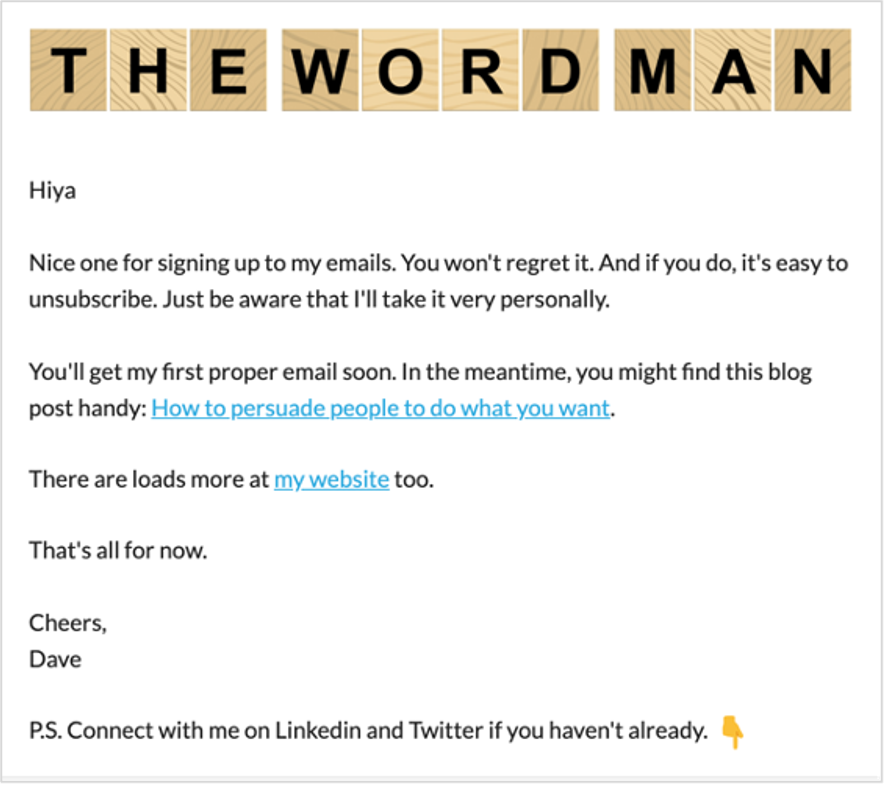
There are two types of email automation:
- Time-based
- Behavior-based
Time-based automation delivers emails on a specific date and time or at a pre-configured interval in a series. For example, you could have a “Welcome Series” of seven emails scheduled to be sent daily for seven days after a new subscriber joins your list.
Behavior-based automation is a more intelligent type of automation that lets you personalize what and when you deliver your emails. For instance, you could monitor your Welcome Series to see if a user clicks on a particular link. Based on that behavior, you could send an additional email (outside of the standard welcome series) informing them of a special offer.
Both forms of email marketing automation allow you to send timely, relevant, personalized, and contextual messages that increase brand loyalty and drive customer engagement.
Customer success marketing automation
Here are seven ways customer success teams can take advantage of marketing automation to monitor customer health and target the highest priority accounts.
1. Onboard your customers
During the onboarding process, you could use automated triggers to proactively advise customers of the next steps based on their activity and how quickly they’re moving through the process. Or if they’re stuck, you could send a “wake up” nudge.
2. Help customers self-serve
Customers don’t always require direct contact with your success team. You could create automations that make it easy for customers to progress on their own.
3. Monitor which customers are in danger of churning
You need to monitor when accounts are at risk and act proactively before a customer leaves. You could use contact scoring, engagement tagging, and pipeline automation to track which customers are in danger of churning.
4. Identify high-priority accounts
You can track customer health and account information to funnel resources to the highest priority accounts quickly. For example, you could check which customers are reporting more problems to see if they require additional training.
5. Collect customer feedback
You can use Net Promoter Score (NPS) surveys to analyze changes in customer scores and behavior towards your product or service. Again, this could highlight the customers you need to prioritize.
6. Send personalized messages
You can personalize emails and messages to match each customer’s contact details and needs. And, using behavior and time-based triggers, you can customize the timing of your messages, and sender information, to make each interaction feel more personal.
7. Manage your success team
Using automation, you can manage and assign tasks based on customer health checks and product usage to make sure no customers get missed and keep your team updated.
Automated Email Drip Campaign
Box is a software company that lets businesses share files and other documents securely. They wanted to run an onboarding drip campaign to convert more of their free-trial users into paying customers.
So they created an email series called “Box Tips” which shares helpful content around their key product features and encourages users to explore their product:
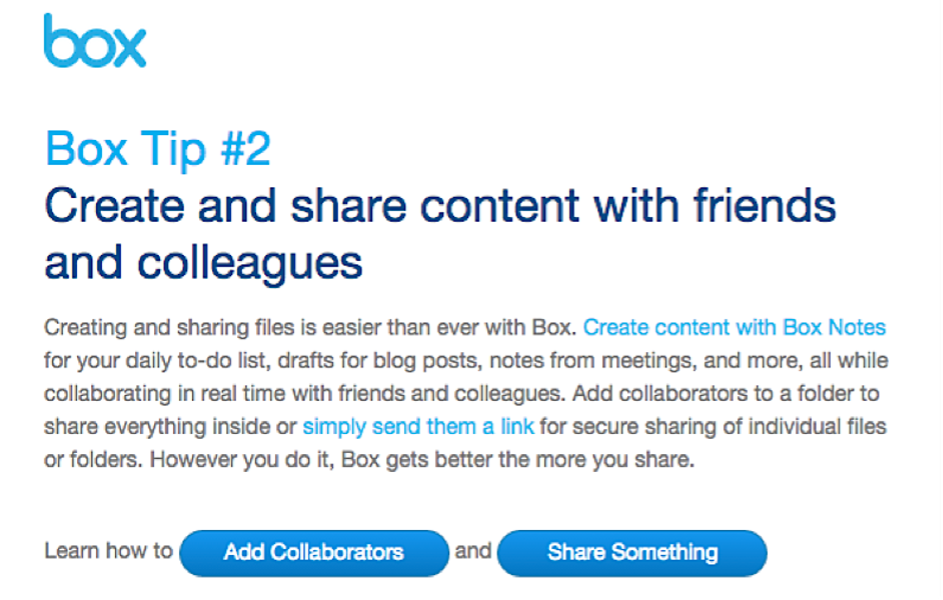
Sharing well-paced educational content at relevant time periods encourages users to become more proficient, until the product “sticks” and they want to upgrade to a premium customer.
If you want to convert more trial users to customers, onboard new customers, or cross-sell customers, education is a vital part of the process. And marketing automation allows you to serve the educational content at a steady pace.
How to Implement a Winning Marketing Automation Strategy for Your Brand
Implementing a marketing automation strategy isn’t easy, but by asking the right questions about who you want to reach and what you want to provide before, during, and after conversion, you can create a winning strategy for your brand.
In this section, you’ll learn how to plan, implement, measure, and optimize your marketing automation program.
Step 1: Plan
The planning phase is essential to establish what you’re what you’re trying to accomplish with marketing automation, so let’s step through a few questions:
1. How is marketing automation best used?
Marketing automation is not meant to replace traditional/manual marketing – it’s intended to enhance your existing processes.
Marketing automation performs best when it’s used to:
- Send messages to website visitors, leads, or customers at critical points before, during, or after the purchasing process.
- Provide them with crucial information.
- Automate check-ins, follow-ups, or other reminders you might otherwise have to delegate to customer service.
A survey by Liana Technologies found that most marketers identify marketing automation’s top benefits as:
- Improving message targeting
- Improving customer experience
- Attracting better qualified leads
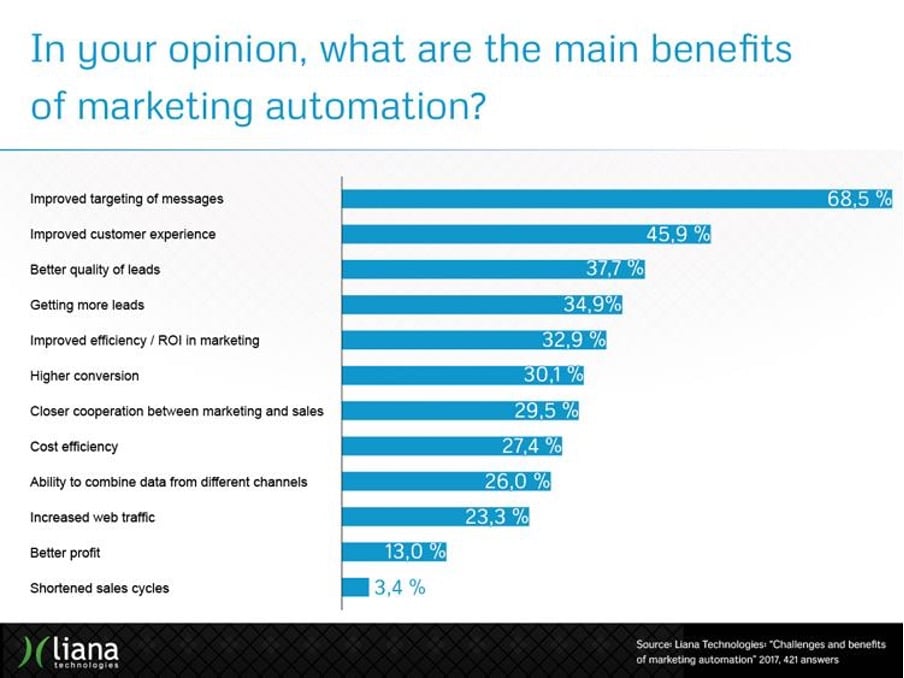
2. What tasks are most realistic to automate?
Essentially, marketing automation can handle predictable and repeatable processes. Most commonly, it’s used for automating particular email messages, such as, “You left something in your cart” or “Get 20% off today”. But you can also automate posting social media messages or sending reminders.
3. What tasks require a human touch?
In short, the non-predictable and repeatable processes. For example, an automated customer service response on Twitter won’t work because each case needs evaluating.
Identify the right tasks
Evaluate your team’s most repetitive marketing tasks to find the most significant gains from automation. Make a list of all your current marketing tasks, and decide which are both time-consuming and ready for automation.
A good idea at this stage is to divide the tasks into three groups before, during, and after conversion:
- Before: Pre-conversion tasks to make leads aware of your products and services, and convince them to follow you.
- During: Conversion tasks to engage leads and help them convert.
- After: Post-conversion tasks to check on customer experience, offer guidance, and encourage cross-sells.
Step 2: Implement
Once you’ve identified which tasks you’re going to automate, you can start implementing them. Using the three groups above, let’s look at some possible scenarios.
1. Attracting the attention of potential customers or leads
Before the conversion phase, you can use automation to let potential leads or purchasers know who you are, what you are offering, and why you are better than others.
Example: Leverage automation to provide a customized onboarding experience
A popular marketing tactic used by Saas providers is to offer a free trial of their software application, allowing users to take their products for a spin, with n commitment.
It’s what we use at Loomly:
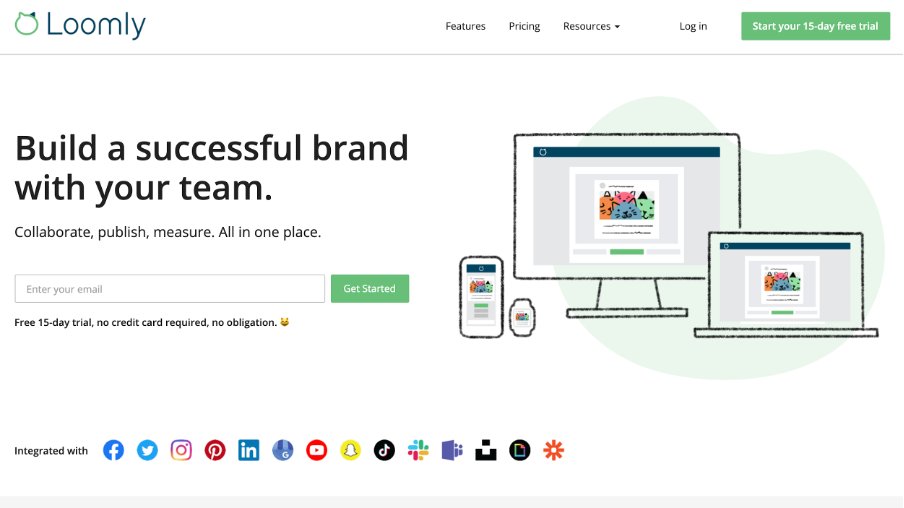
By offering a free trial, potential purchasers get to test your product and see if it meets their requirements. Behind the scenes, you can use marketing automation to give prospective customers the best possible experience by:
- Confirming their signup details
- Sending links to helpful quick start tutorials, so they maximize their trial period.
- Introducing them to your resources library.
- Sending messages at a predefined interval, say after 3 days, to check everything is okay and ask if they have questions.
- Triggering messages based on how they use the product and where they might need help; e.g. scheduling an Instagram post.
- Reseting their password if requested.
In short, automation empowers you to maximize the trial experience before users actually become customers.
2. Converting leads into customers
Example: Bring shoppers with abandoned carts back to finish their purchase
Research shows that a staggering 69% of shoppers abandon their carts before checking out. So sending an automated abandoned shopping cart email is a great way to nudge shoppers to buy your product.
For example, Dyson does this really well by showing an image of the abandoned product in the shopper’s cart.
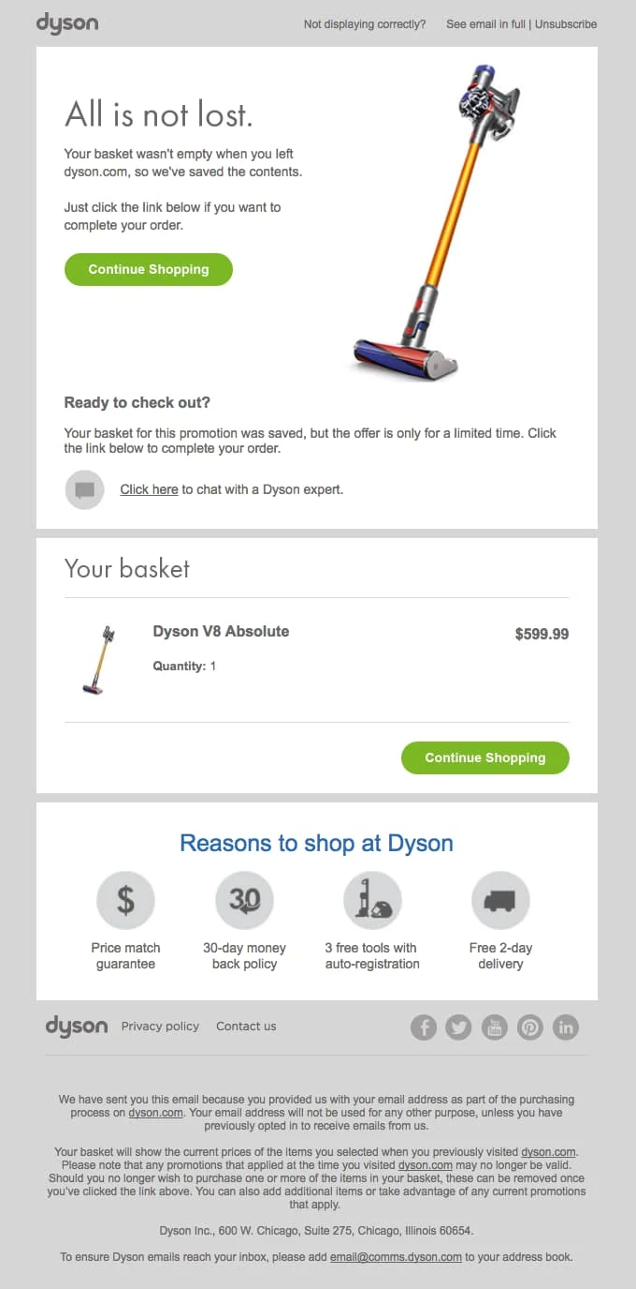
Credit: Really Good Emails
Plus, they added some urgency by reminding the recipient that this promotion is for a limited time only: “Your basket for this promotion was saved, but the offer is only for a limited time.”
3. Adding value to your customers
Example: Make use of your existing content
If you already have content on your site, such as documentation, guides, blog posts, and explainer videos, you can set up automated email sequences to send links to your new customers. These can help them over that initial learning hurdle without any additional work needed on your part.
For example, Dyson sends a series of automated emails to new customers covering how to use and maintain their new machine, plus asking for reviews:
- Get started with your new Dyson D7 cord-free vacuum.
- We’d like to know what you think – you can review us on Trustpilot.
- How to keep your Dyson D7 cord-free vacuum working at its best.
- Rate your Dyson D7 cord-free machine.
- Have you been washing your Dyson D7 cord-free filter?
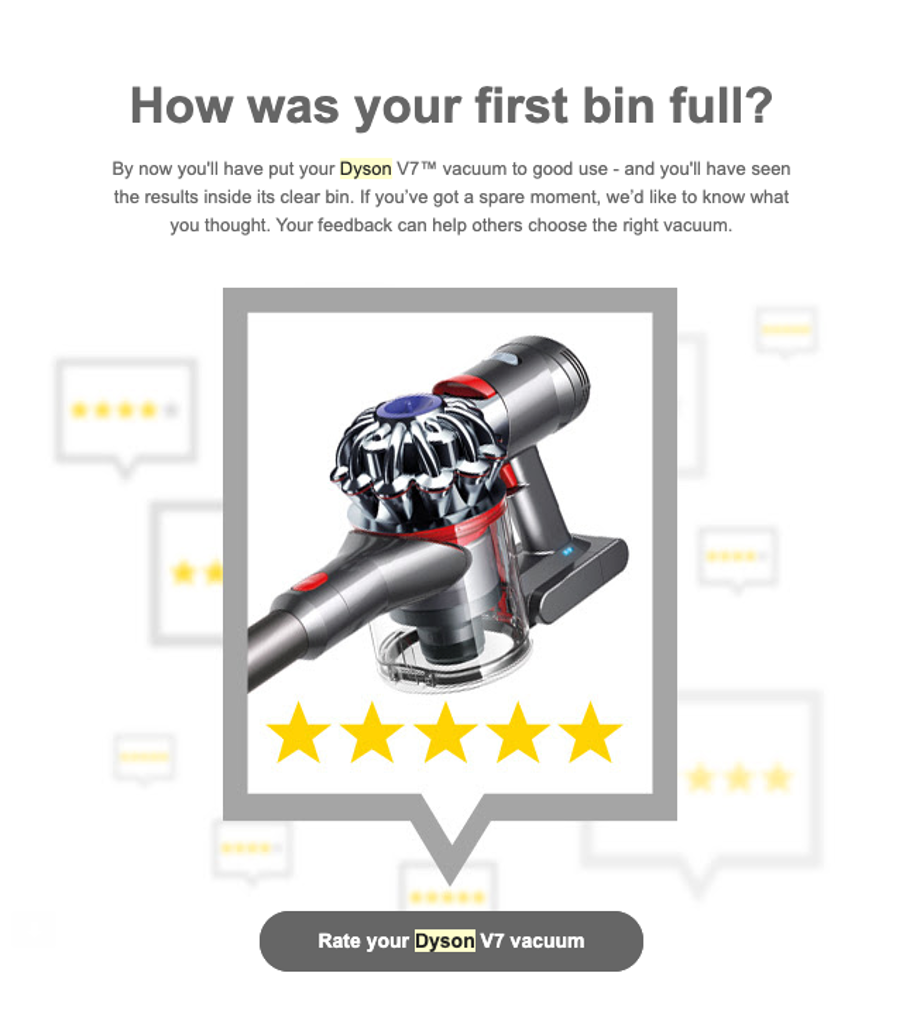
Dyson personalizes these emails to customers by referencing which product they’ve purchased. Asking for feedback and reviews when appropriate helps build social-proof to attract more customers.
Step 3: Measure
After planning and implementing your marketing automation strategy, you’ll need to start tracking and measuring the results. You need to know what’s working and what isn’t.
Evaluate automation effectiveness
The marketing automation tools you use should include some built-in analytics and performance tracking. So, first-up you can check those figures to glean some feedback.
Reporting and analytics allow you to prove the impact of your marketing efforts, ensuring you measure all necessary data, account engagement, and the overall effect of sales and marketing activities. Decide which key performance indicators (KPIs) are the most important to track, and which areas of marketing provide the best ROI.
Ask yourself questions while reviewing the results
Secondly, as you review the results consider the following questions:
1) What’s working well?
- Are you increasing sales or decreasing your refund rate as a result of your marketing automation?
- Is your customer satisfaction score improving?
2) Are messages being delivered at the right time?
- If you’re sending automated reminders, you need to know if you’re allowing enough time for recipients to take action?
- Is your post-purchase content arriving early enough to help customers progress and prevent your customer service team from being flooded with messages?
3) Are leads or customers engaging with your messages?
- What messages are opened?
- What information is acted on?
4) What’s not working?
- Are unsubscribe rates increasing?
- Are you losing customers because they received too much or not enough information?
- Is your marketing team now doing more work instead of less?
You can use successful marketing automation as a benchmark for future tests and campaigns in the next phase.
Step 4: Optimize
Over the long-term, you should be looking at ways to optimize your marketing automation.
In this phase, you could run some A/B testing to see if one version outperforms the other. For example, you could split-test the headlines in your email marketing messages:
- Version A: sent with an emotional headline
- Version B: sent with a statistical headline
The version with the highest open rates would be the “winner”, and the data collected would help you identify what drives your audience to open emails.
Optimization is one of those never-ending tasks as you should always be looking to get the optimal results from your marketing efforts.
Marketing Automation in a Nutshell
Marketing automation not only increases the efficiency of your marketing team but also provides a more personalized experience for your customers.
Creating your marketing automation strategy comes down to asking the right questions. As soon as you know:
- Which marketing processes you can automate
- Who you want to target
- What you want to provide before, during, and after conversion
you can start planning and implementing a winning strategy for your brand.
